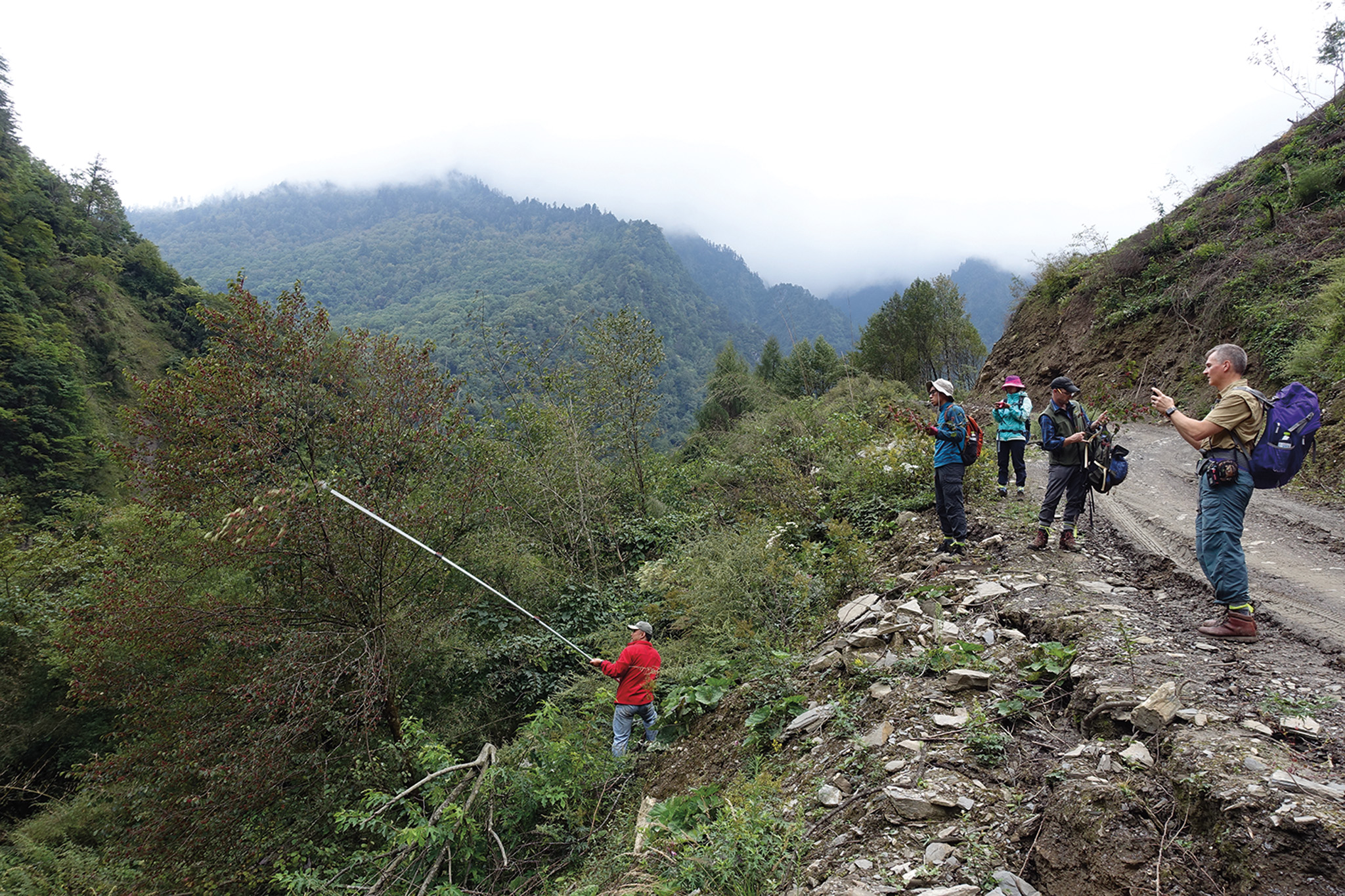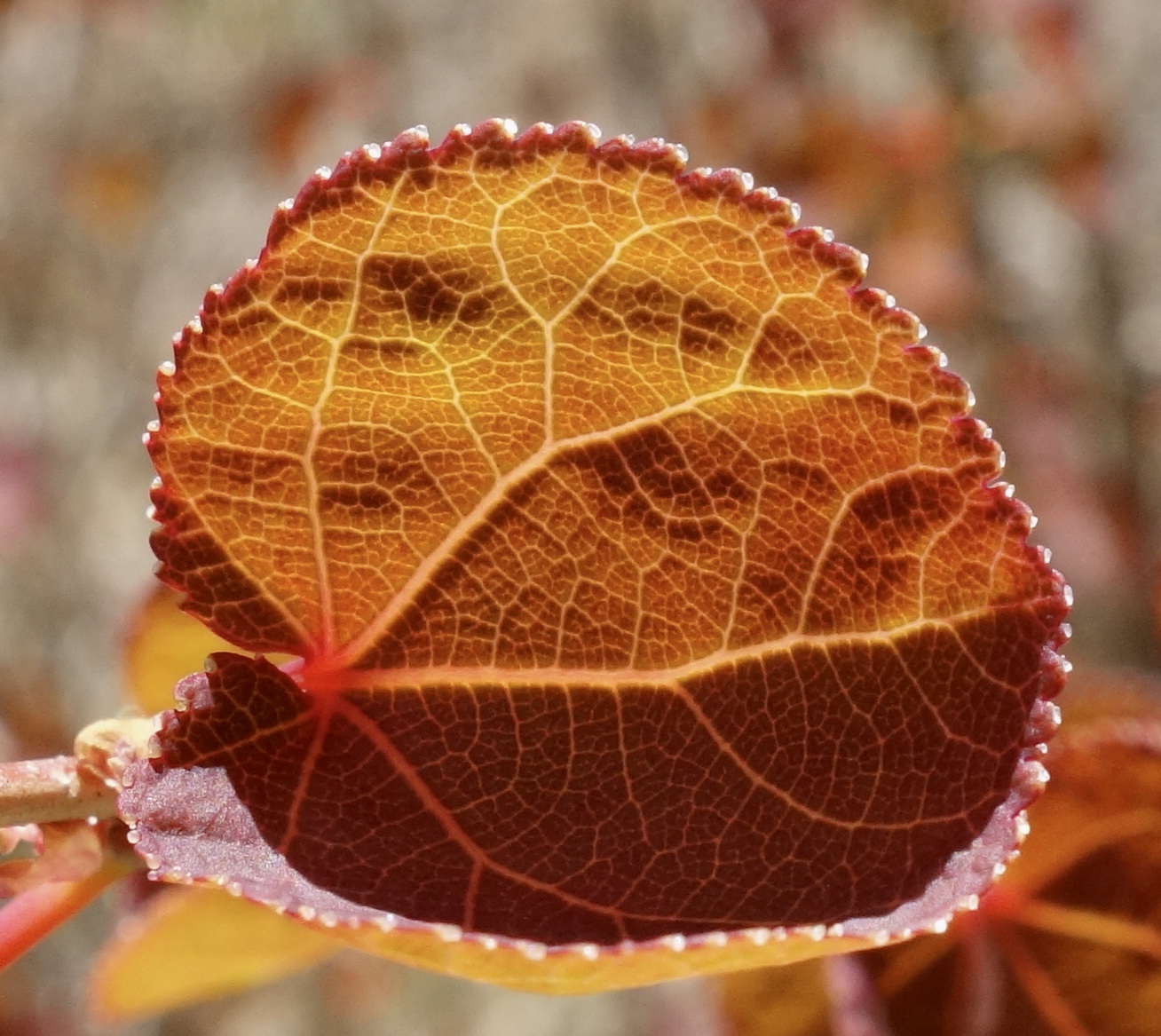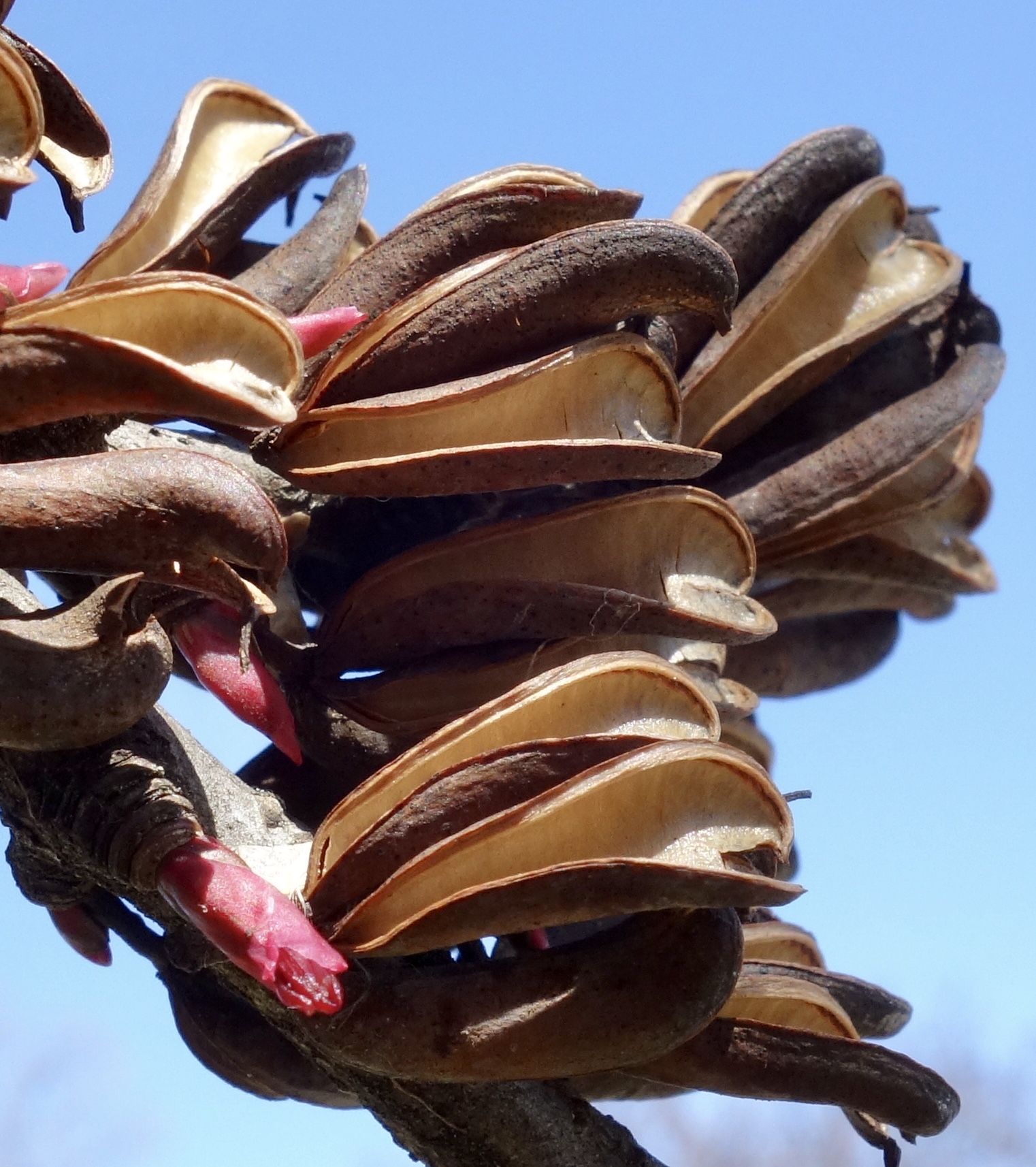
Katsura Tree
Cercidiphyllum japonicum
- Accession Number
- The alpha-numeric value assigned to a plant when it is added to the living collection as a way of identifying it.
- Accession Date
- The year the plant’s accession number was assigned.
- Common Name
- The non-scientific name for the plant.
- Scientific Name
- The scientific name describes the species of an organism. The first word is the plant's scientific genus and the second is the specific epithet. This two-word binomial is sometimes followed by other taxonomic descriptors, including subspecies (denoted by "ssp."), variety (denoted by "var."), form (denoted by "f." or "forma"), and cultivar (denoted by single quotation marks).
- Plant Family
- The family to which the plant belongs.
- Propagation Material
- The first part (material code) describes the material used to create the plant. The most common codes are "SD" (seed), "EX" (existing plant), "PT" (plant), "CT" (cutting), "SC" (scion), "SG" (seedling), and "GR" (graft). The second part describes the lineage the plant is derived from. The last part describes the year of propagation.
- Collection Data
- The first part indicates provenance (place or source of origin) using a letter code ("W" = wild, "G" = garden, "Z" = indirect wild, "U" = uncertain). The second part lists the plant source. For wild-collected material, the collector, collection number, and country are given.
- Location
- The location of the plant on the landscape.
W.S. Clark
This katsura arrived at the Arnold Arboretum in 1878. The story of how it came here is the opening of long series of exchanges between the Arboretum and researchers in Japan.
The Arnold Arboretum was established in 1872, four years after the Meiji Restoration in Japan. These concurrent events had a profound impact on the collections at the Arboretum. Before the Meiji Restoration, the Japanese government maintained limited interactions with foreign countries. Only Chinese and Dutch ships had been permitted to visit Japan for more than two hundred years, and access was restricted to a single port—Nagasaki. Following the Meiji Restoration, trade between Japan and Western countries expanded rapidly, as did collaborations between Japanese and Western scientists.
In 1876, the Japanese government asked an American scientist named William S. Clark to visit and assist with establishing the Sapporo Agricultural College (now Hokkaido University). Clark was the president of the Massachusetts Agricultural College (now the University of Massachusetts, Amherst), and he ultimately spent eight months in Sapporo, consulting with the faculty. While he was there, Clark also collected seeds of local plants. When he returned to Massachusetts, he sent an allotment of those seeds to the Arnold Arboretum, including seed for this katsura.
The katsura (Cercidiphyllum japonicum) is one of two species in both its genus Genus: A genus (plural genera) is a taxonomic rank used in the biological classification of living and fossil organisms, as well as viruses, in biology. In the hierarchy of biological classification, genus comes above species and below family. and its family (Cercidiphyllaceae). The scientific name for the genus (Cercidiphyllum) refers to the leaf shape, which resembles the well-known but unrelated redbud (Cercis). This species of katsura is native to northern Japan and China. The second species (C. magnificum) is native to only the central Japanese island of Honshu.
The Arboretum’s first director, Charles Sprague Sargent, visited Japan in 1892. He spent a concerted amount of time on Hokkaido. There, he observed that katsuras were an abundant and defining feature of the low, moist woodlands. He included a photograph of a katsura as the frontispiece of a book about his travels. The tree had what Sargent described as a “large but by no means exceptionally large trunk.” It measured almost seven feet in diameter.
On that same trip—the first international collecting expedition by an Arboretum staff member—Sargent visited the Sapporo Agricultural College. An accomplished researcher named Kingo Miyabe was the botany professor at the school. Miyabe had studied at Harvard from 1886 to 1889, and although he was unable to travel with Sargent (owing to an illness), he recommended a guide and provided invaluable advice. Miyabe would later collaborate with other Arboretum collectors during their trips to Japan. The Arboretum has also worked with later students and staff from Hokkaido University. (Most recently, in 2018 and 2019, Arboretum collectors visited a Hokkaido University research forest on the central island of Honshu.) In this sense, the katsura from Clark represents the opening of a long and lasting relationship between the Arboretum and researchers in Japan.
Click here to read a transcript of the audio segment below.
Japan
Viewing this plant in-person? Look for these defining characteristics:
About Our Collection
Fun Facts
Stats
- Living Specimens
- Specimens Dead or Removed
- First Addition
- Most Recent Addition
- Tallest Specimen



Living Specimens
| Plant ID | Accession Date | Received As | Origin | Source |
|---|---|---|---|---|





